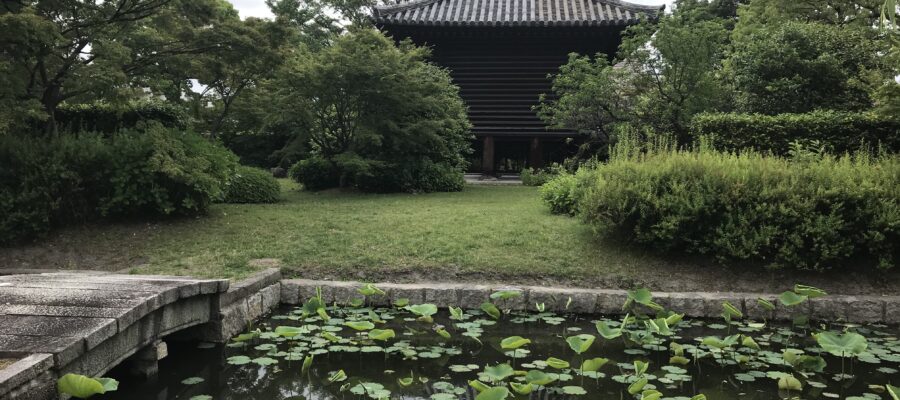新幹線から見ていつも気になる五重塔
新幹線で京都を通ると南に立つ五重塔が目に入ります。学生時代から東京と大阪を往復する時に、いつも気になっていましたが、それ以上調べたりはしませんでした。日本の歴史・文化を伝える仕事に就いて、ようやくこの五重塔を訪れる機会がやって来ました。
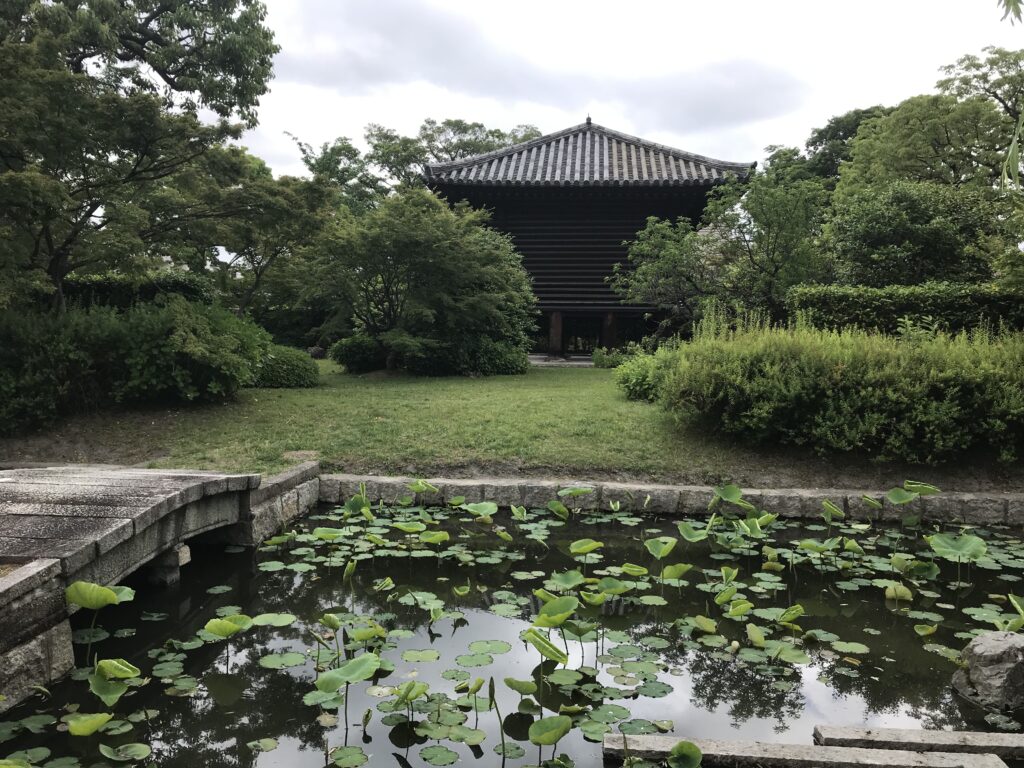
東寺の五重塔は826年に空海の創建時に始まったと言われていますが、高い塔であるため、落雷の的になってしまったようで、4回も焼失しています。現在の塔は、1644年に徳川家光の寄進により竣工したものです。
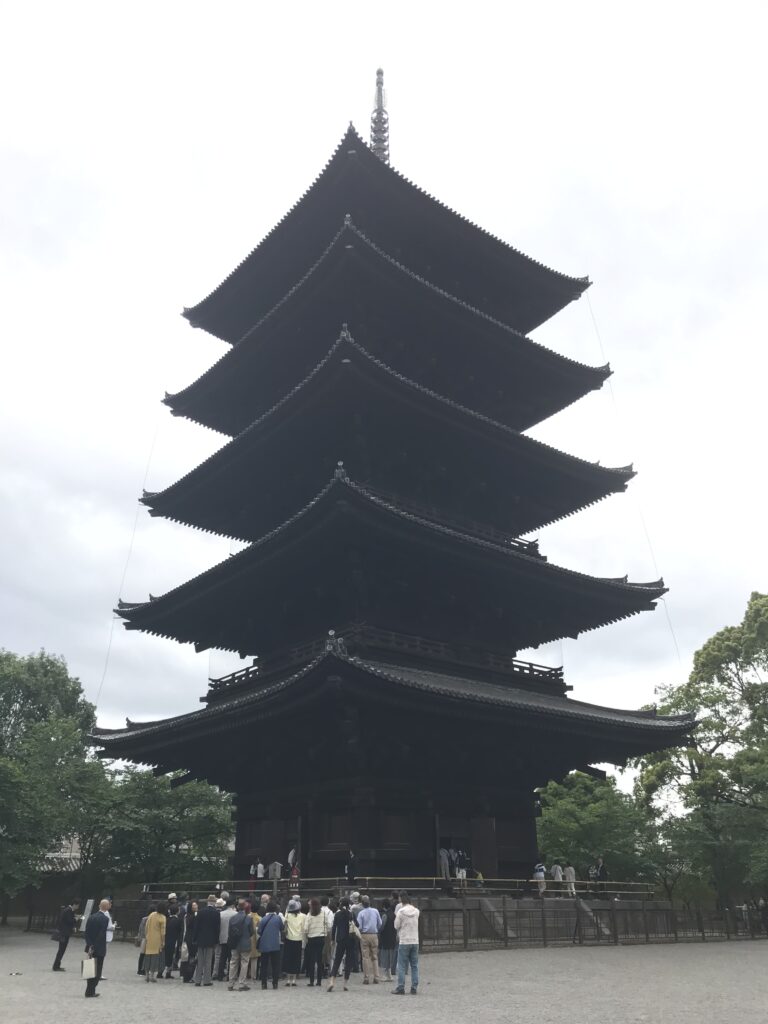
高さ55mは日本一高い五重塔
高さ55mで、現存する日本の古塔中、最高の塔で、もちろん国宝です。高いだけでなく、フォルムが美しく、私の一番のお気に入りの五重塔でもあります。ガイド向けの本で、東寺を紹介する本に例文としてありましたが、ピサの斜塔と大体同じ高さだそうです。ピサの斜塔を実際にどの程度の人が見ているのか疑わしいので、私が東寺を紹介する際は、ピサの斜塔を例として出しません。
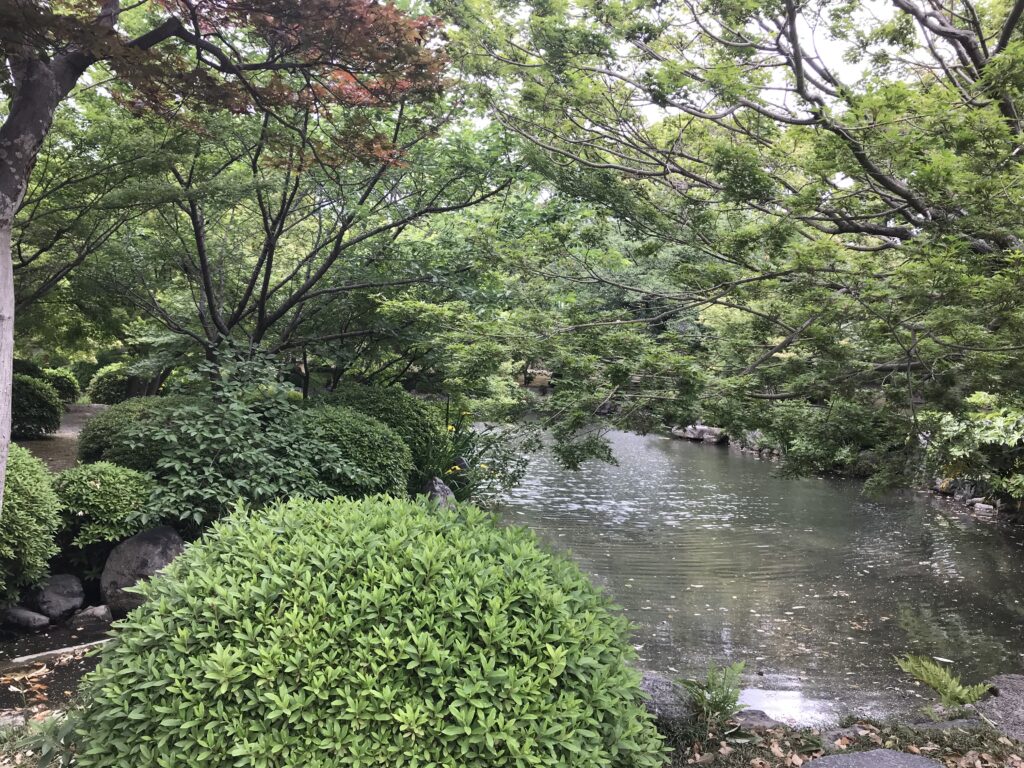
立体曼荼羅の世界
写真撮影が禁止されている金堂には大きな薬師如来と、両脇に日光菩薩、月光菩薩が立っています。もう一つ、こちらも内部撮影禁止ですが、豊臣秀頼が発願し、1603年に再興された講堂もお見逃しなく。中には、空海の密教の教えを表現する立体曼荼羅の世界を見ることができます。
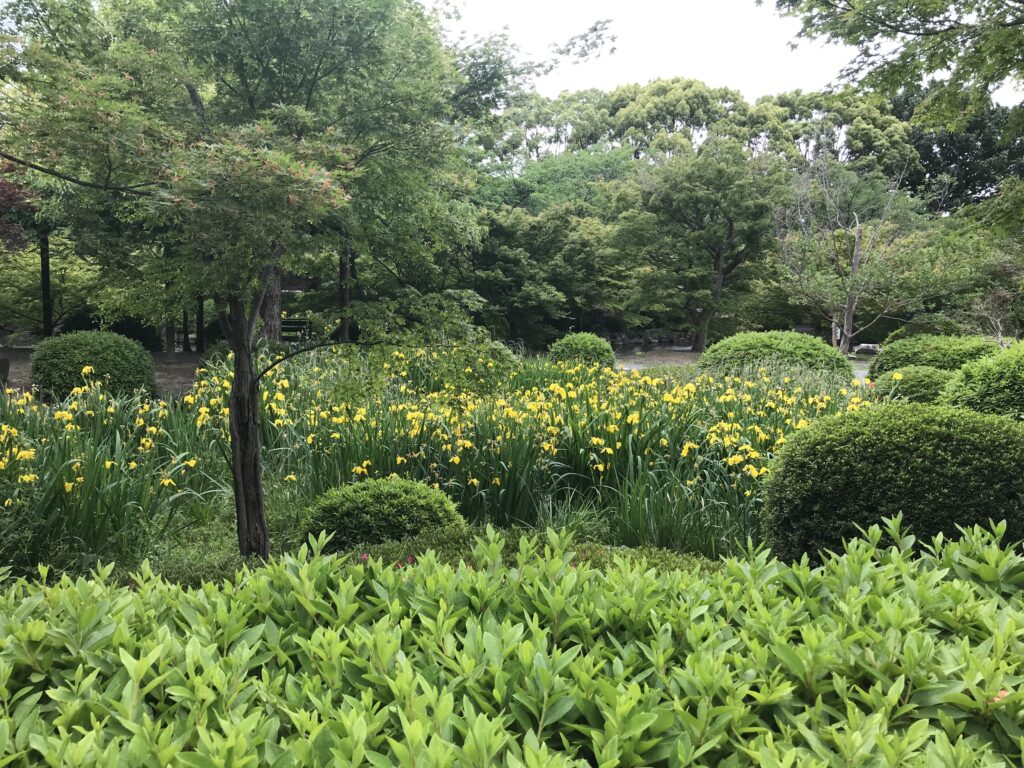
如来が5像、菩薩も5像、そして明王も5像を安置しています。密教では、こんなに沢山の仏さまがいるのだと感心しました。如来の5像の真ん中は、大日如来の像です。大概真ん中にいるはずの阿弥陀如来は、ここではわき役のようです。京都駅からも近鉄戦ですぐの駅なので、是非一度、訪問されることをお勧めいたします。(完)
東寺の御朱印
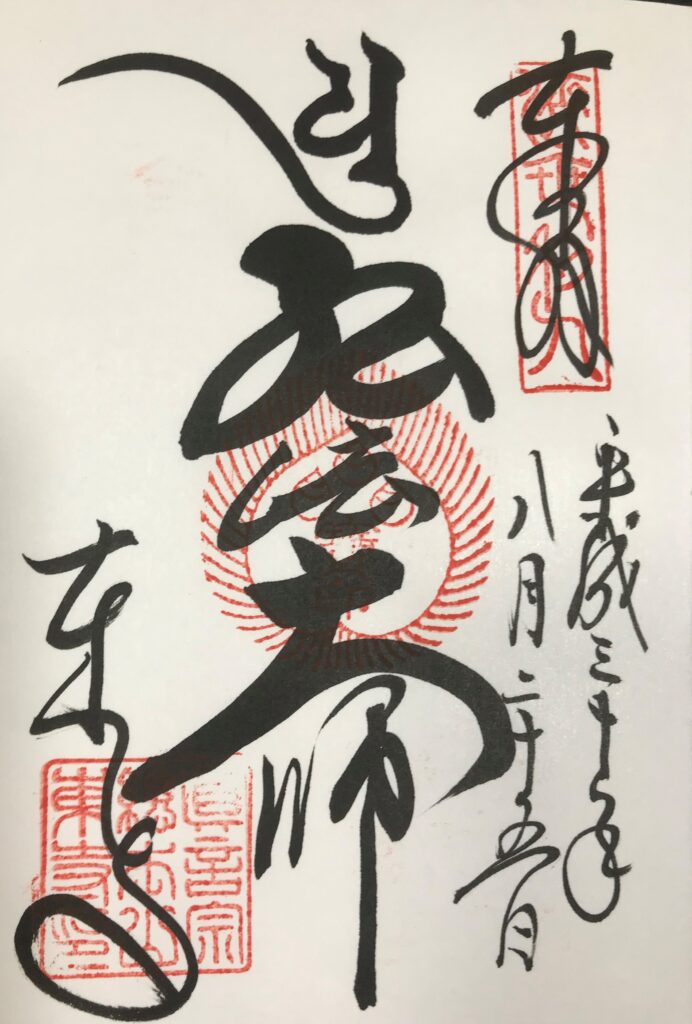
東寺が紹介されている書籍
神仏霊場会の公式ガイドブックに東寺が紹介されています。
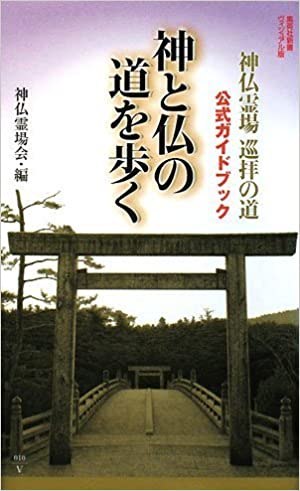
神と仏の道を歩く 神仏霊場巡拝の道公式ガイドブック (集英社新書ヴィジュアル版) [ 神仏霊場会 ]
価格:1,466円
(2021/5/6 09:24時点)
感想(5件)
Toji Temple (Kyoto)
When passing through Kyoto on the Shinkansen bullet train, you will see a five-story pagoda standing to the south. Since I was a student, I always wondered about this pagoda when I traveled back and forth between Tokyo and Osaka, but I never investigated it further. Now that I am working in the field of Japanese history and culture, I finally had the opportunity to visit the five-story pagoda.
The five-story pagoda at Toji Temple is said to have been started in 826 when it was built by Kukai, but because it is a tall pagoda, it seems to have been the target of lightning strikes and has been destroyed by fire four times. The present pagoda was completed in 1644 with a donation from Tokugawa Iemitsu.
At 55 meters high, it is the tallest tower among the existing ancient pagodas in Japan and is, of course, a national treasure. It is my favorite five-story pagoda not only because of its height but also because of its beautiful form. I read in a book for guides that introduces Toji Temple that it is roughly the same height as the Leaning Tower of Pisa, as an example. I doubt how many people actually see the Leaning Tower of Pisa, so I do not use it as an example when I introduce To-ji Temple.
In Kondo, where photography is prohibited, a large Yakushi Nyorai (Medicine Buddha) stands flanked on both sides by Nikko Bosatsu (Sunlight Bodhisattva) and Gekko Bosatsu (Moonlight Bodhisattva). Another hall, also forbidden to photograph inside, but not to be missed, is the lecture hall, which was rebuilt in 1603 at the behest of Toyotomi Hideyori. Inside, you can see the world of the three-dimensional mandala, which represents the esoteric teachings of Kukai.
Five statues of Buddha, five statues of Bodhisattvas, and five statues of Myoo are enshrined. I was impressed that there are so many Buddhas in esoteric Buddhism. In the middle of the five statues of Buddha is a statue of Dainichi Nyorai. Amida Nyorai, who is usually in the center, seems to play a minor role here. The station is a short ride from Kyoto Station on the Kintetsu line, so I highly recommend a visit to this temple. (End)
Le temple Toji
Lorsque vous traversez Kyoto dans le train à grande vitesse Shinkansen, vous apercevez une pagode à cinq étages qui se dresse au sud. Depuis que je suis étudiant, je me suis toujours interrogé sur cette pagode lorsque je faisais des allers-retours entre Tokyo et Osaka, mais je n’ai jamais approfondi la question. Maintenant que je travaille dans le domaine de l’histoire et de la culture japonaises, j’ai enfin eu l’occasion de visiter la pagode à cinq étages.
On dit que la pagode à cinq étages du temple Toji a été commencée en 826 lorsqu’elle a été construite par Kukai, mais comme il s’agit d’une grande pagode, elle semble avoir été la cible de la foudre et a été détruite par le feu quatre fois. La pagode actuelle a été achevée en 1644 grâce à un don de Tokugawa Iemitsu.
Avec ses 55 mètres de haut, elle est la plus haute tour parmi les pagodes anciennes existantes au Japon et est, bien sûr, un trésor national. C’est ma pagode à cinq étages préférée, non seulement en raison de sa hauteur mais aussi de la beauté de sa forme. J’ai lu dans un livre pour guides qui présente le temple Toji qu’elle a à peu près la même hauteur que la tour penchée de Pise, à titre d’exemple. Je doute que beaucoup de gens voient réellement la Tour de Pise, donc je ne l’utilise pas comme exemple lorsque je présente le temple To-ji.
Dans le Kondo, où il est interdit de photographier, un grand Yakushi Nyorai (Bouddha de la médecine) se dresse, flanqué des deux côtés de Nikko Bosatsu (Bodhisattva du soleil) et de Gekko Bosatsu (Bodhisattva du clair de lune). Une autre salle, également interdite de photographie à l’intérieur, mais à ne pas manquer, est la salle de conférence, qui a été reconstruite en 1603 à la demande de Toyotomi Hideyori. À l’intérieur, vous pouvez voir le monde du mandala tridimensionnel, qui représente les enseignements ésotériques de Kukai.
Cinq statues de Bouddha, cinq statues de Bodhisattvas et cinq statues de Myoo y sont enchâssées. J’ai été impressionné qu’il y ait autant de bouddhas dans le bouddhisme ésotérique. Au milieu des cinq statues de Bouddha se trouve une statue de Dainichi Nyorai. Amida Nyorai, qui se trouve habituellement au centre, semble jouer un rôle mineur ici. La station est à une courte distance de la gare de Kyoto sur la ligne Kintetsu, donc je recommande fortement une visite à ce temple. (Fin)
